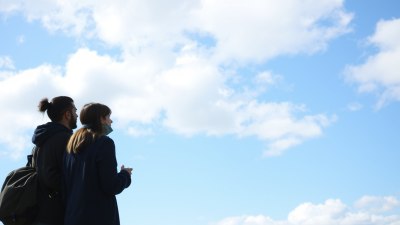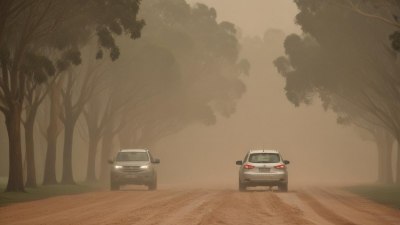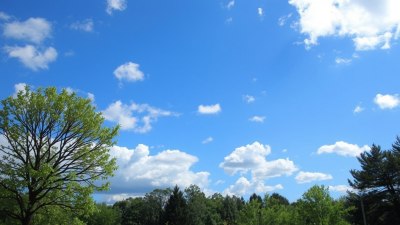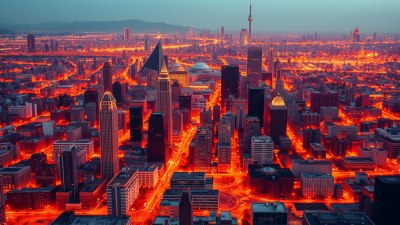How a Cold Snap Brought Us Back to Reality
Explore how an unexpected cold snap forced us to rethink our comforts, priorities, and connection to nature and community.
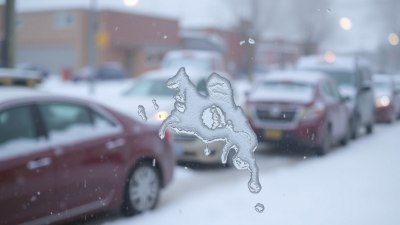
When the cold snap swept across our region, it did more than just drop temperatures; it jolted us out of our comfort zones and forced a confrontation with reality that many of us had long ignored. The sudden bite of the chill was a stark reminder of nature's power and unpredictability, challenging our infrastructure, lifestyle, and even our mindset. This unexpected weather event served as a catalyst for reflection—on how dependent we are on technology and modern conveniences, how fragile our social systems can be, and how resilient communities are when faced with adversity.
The onset of the cold snap began subtly, with forecasts predicting a mild dip in temperature. However, the reality soon proved more drastic. Within hours, the mercury dropped well below seasonal averages, and frost formed on windowpanes where it had not appeared for years. What began as a curiosity soon escalated into an emergency, affecting transportation, power supply, and daily routines. Roads turned treacherous, water pipes froze, and thousands found themselves without heat during the coldest nights. The experience was humbling, making us confront how ill-prepared many were for such extreme conditions despite advances in weather prediction and emergency planning.
One of the most immediate effects of the cold snap was on infrastructure. Cities and towns unaccustomed to such low temperatures struggled to maintain essential services. Power grids, stretched thin by increased demand for heating, faced outages in several areas. In homes without adequate insulation or heating systems, residents battled the elements with blankets and makeshift solutions. The fragility of these systems revealed glaring gaps in urban planning and emergency response readiness, prompting urgent calls for improvement in resilience strategies tailored to unpredictable climate events.
Beyond the physical challenges, the cold snap had a profound psychological impact on individuals and communities. The abrupt change in weather disrupted daily life, canceling events, shuttering schools, and confining people indoors. In these moments, isolation became a tangible reality for many, especially the elderly or those living alone. This social distancing, enforced by environmental conditions rather than choice, underscored the importance of social connections and community support networks. Stories emerged of neighbors checking in on one another, sharing resources, and collectively enduring the hardship, rekindling a spirit of solidarity that modern life often overlooks.
Interestingly, the cold snap also heightened appreciation for the environment and the delicate balance we coexist within. As trees shed leaves earlier than usual and wildlife patterns shifted, it became clear that this event was a sign of broader climatic shifts. Scientists pointed to the cold snap as an illustration of increased variability — a symptom of climate change that combines extreme cold spells with periods of intense warmth. This paradox forced people to reconsider preconceived notions of global warming as simply a continuous rise in temperature, deepening understanding of the complex dynamics at play.
In many households, the cold snap disrupted routines in unexpected ways. Parents juggled working remotely while caring for children unable to attend school, reliant on technology that sometimes faltered under strain. Supply chains slowed, causing shortages of basic goods and highlighting vulnerabilities in modern consumer culture. Meals were improvised from whatever was at hand, inspiring creativity but also anxiety about future preparedness. These challenges encouraged reflection on sustainability and self-reliance, motivating some families to begin emergency planning and resource stockpiling for future uncertainties.
The educational impact of the cold snap was also significant. Remote learning environments faced new obstacles: students without reliable heating or internet struggled to participate. Educators had to adapt quickly, balancing empathy with the need to maintain academic progress. Some schools initiated outreach programs to distribute warm clothing and devices, showcasing the crucial role institutions play beyond formal instruction. The situation demonstrated the disparities in access to resources, reinforcing the need for equitable solutions in education and public policy.
Healthcare systems, already under strain from other crises, found themselves contending with increased cases of cold-related illnesses. Emergency rooms saw surges in patients suffering from hypothermia, frostbite, and respiratory problems exacerbated by the cold. Healthcare workers faced extended shifts and resource shortages, underscoring the importance of preparedness and the human cost of environmental shocks. Public health campaigns emerged emphasizing preventive measures, demonstrating how cross-sector collaboration is essential to mitigate risks associated with extreme weather.
Economically, the cold snap delivered a mixed impact. While some businesses suffered lost revenue due to closures and supply disruptions, others experienced increased demand, particularly in sectors related to heating, emergency supplies, and home maintenance. This uneven effect illuminated the complexities of economic resilience and the need to diversify local economies. Communities began discussing long-term strategies to fortify economic structures against climate-induced volatility, including investments in green infrastructure and energy efficiency improvements.
Culturally, the cold snap rekindled traditional practices often forgotten in the era of convenience. Stories spread about homemade remedies to ward off cold, crafting warm garments, and communal gatherings around fires. These shared experiences connected individuals across generations, reviving a sense of heritage and adaptive wisdom. Such cultural resilience served as a reminder that while modern technology is invaluable, human ingenuity and traditions remain crucial in facing environmental challenges.
Technologically, the event exposed both strengths and limitations. Advances in meteorology allowed early warnings, yet the communication of alerts needed improvement to reach all demographics effectively. Smart home devices helped some monitor and control heating more efficiently, but reliance on electricity became a vulnerability during outages. The cold snap highlighted the need to develop robust, accessible technologies that can function in extreme conditions, ensuring inclusivity and reliability in emergency situations.
The environmental consequences of the cold snap were multifaceted. While plant and animal life experienced stress, there was also a temporary reduction in carbon emissions due to decreased industrial activity and transportation. Ecologists noted that certain ecosystems might benefit from such cold events intermittently, helping control pests and resetting growth cycles. However, the unpredictability and intensity of these cold spells challenge ecosystem stability overall, requiring ongoing scientific monitoring and conservation efforts tailored to shifting patterns.
Community initiatives sprang up in response to the cold, with volunteers mobilizing to deliver warmth and supplies to vulnerable populations. Local governments partnered with nonprofits to open emergency shelters and provide transportation for those affected. These actions highlighted the critical importance of collaboration at all societal levels and inspired new frameworks for disaster response and community resilience planning. The shared adversity fostered a renewed sense of empathy and social responsibility, transcending usual divides.
Personal stories from the cold snap illuminate a range of human emotions and adaptations. For some, it was a trial of endurance, pushing them beyond comfort into resourcefulness. For others, it sparked moments of kindness and connection, reinforcing bonds otherwise weakened by modern life’s pace. The narratives emerging from this event serve as powerful testimonials to the capacity for growth through hardship and the reaffirmation of what truly matters when material certainties are stripped away.
In reflecting on how the cold snap brought us back to reality, it’s clear that such environmental events act as mirrors, revealing both vulnerabilities and strengths. They challenge assumptions, prompt reassessment of priorities, and inspire action to build a future more attentive to the interdependence between humans and the natural world. The lessons learned extend beyond weather preparedness to encompass social equity, technological innovation, cultural preservation, and sustainable living.
Looking forward, the experience of the cold snap urges integration of climate adaptation into everyday governance and community planning. Strategies must balance immediate response capabilities with long-term resilience frameworks that anticipate greater variability in weather patterns. Investments in infrastructure, public health, education, and economic diversification become crucial pillars supporting this goal. Moreover, fostering a culture of preparedness and ecological mindfulness among citizens enhances collective ability to face future challenges with agility and solidarity.
In average times, it’s easy to become complacent, lulled into a false sense of control over our environment and lives. Yet, the cold snap shattered this illusion, reminding us that we are part of a dynamic planet subject to forces beyond our full command. Embracing this reality is not about resignation but about empowerment through knowledge, community, and adaptability. By acknowledging these truths, individuals and societies can transform vulnerability into strength and uncertainty into opportunity.
Ultimately, the cold snap’s legacy is one of awakening and renewal. While its immediate impacts were disruptive and sometimes painful, the broader effect was to realign our perceptions and actions toward a more grounded, interconnected existence. It served as a potent educator, revealing the critical importance of preparedness, compassion, and sustainable practices in an era marked by environmental change. Keeping these lessons close will be essential as we navigate an increasingly complex and unpredictable world, ensuring that when the next cold snap arrives, we are better equipped—not just physically but collectively and spiritually—to meet it with resilience and hope.



